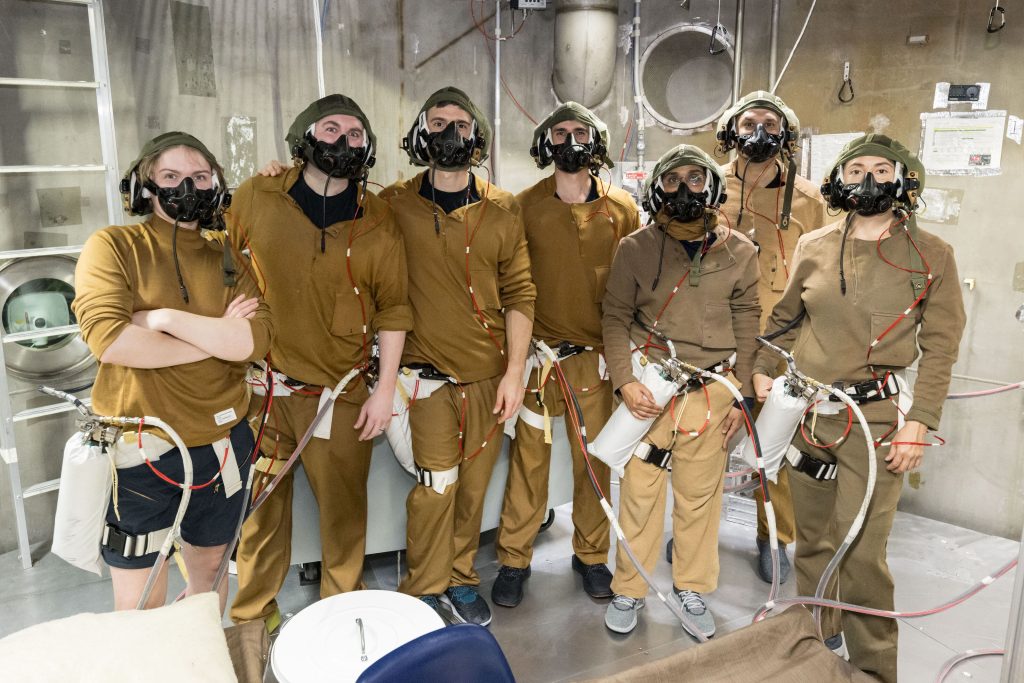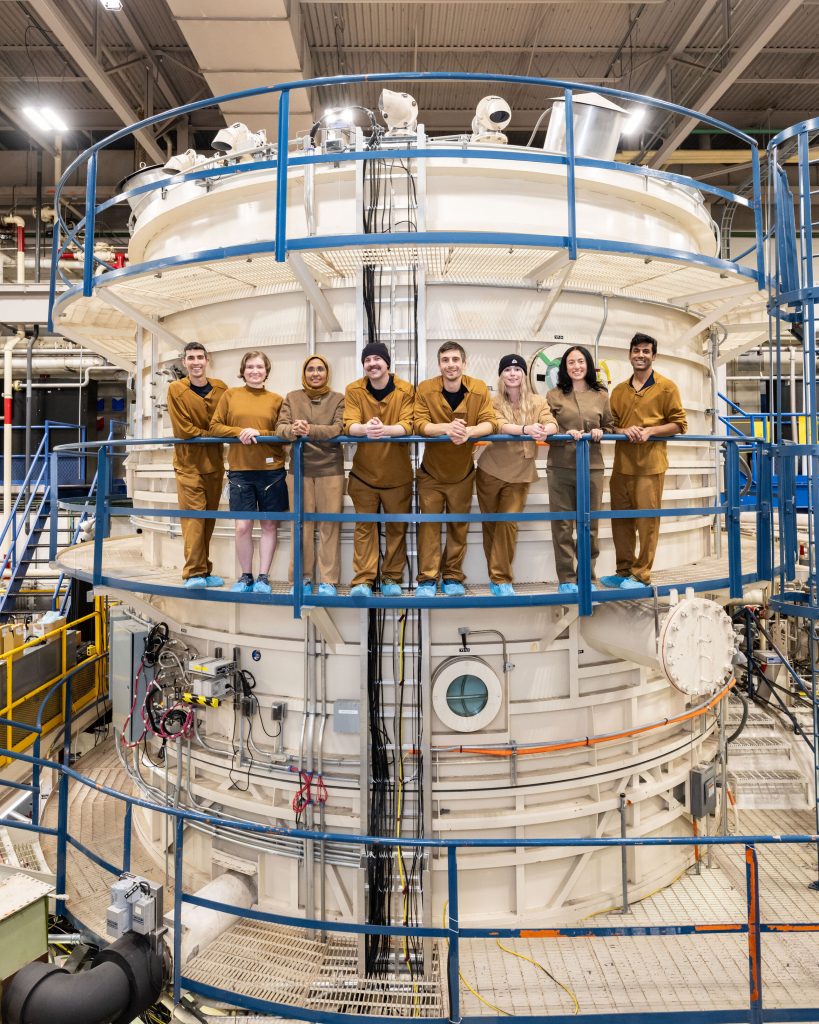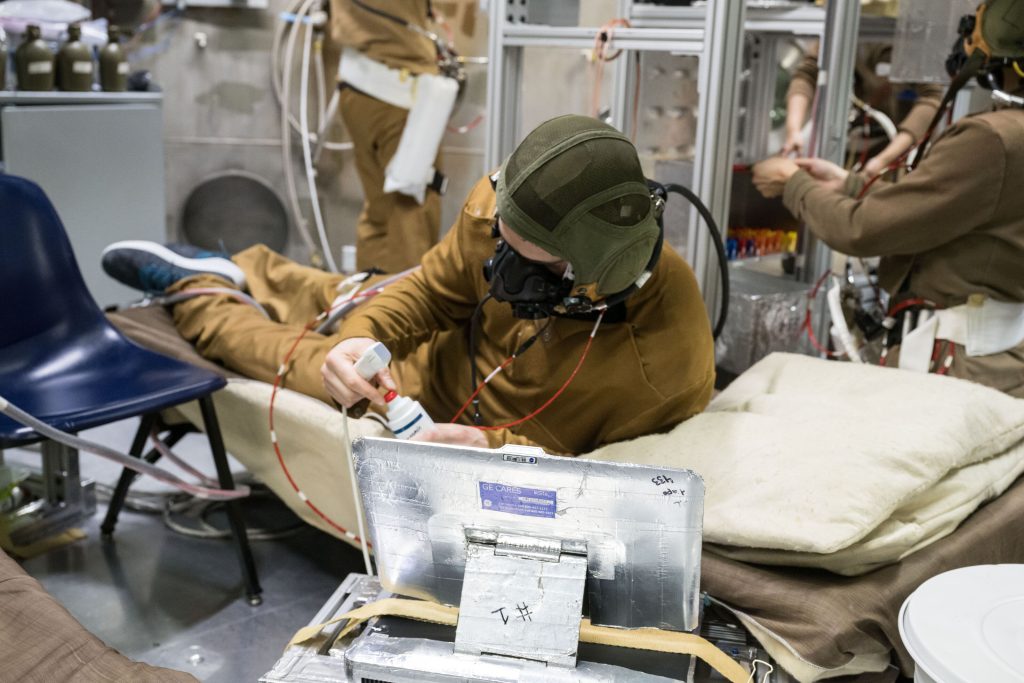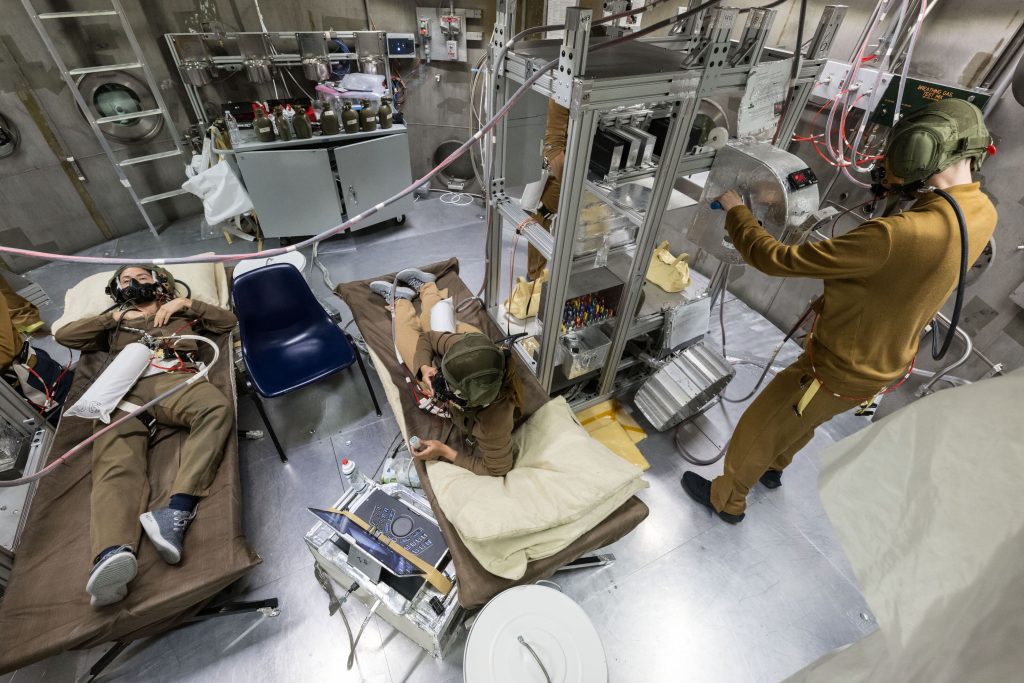2025
When astronauts venture outside to explore the Moon’s surface, they don’t simply zip up a suit and step through the airlock like in Hollywood blockbusters. The real-life process is far more complex—and crucial to astronaut survival. Behind every spacewalk is a precise dance of physiology and physics that begins long before the first boot touches lunar dust.

At the heart of this choreography is the prebreathe—a vital protocol designed to protect astronauts from decompression sickness (DCS) when moving from a pressurized habitat to the lower-pressure environment of a space suit. And with NASA’s Artemis program aiming for high-frequency lunar EVAs (extravehicular activities), refining this process for the lunar surface is important.
Pressure Drops and Physiological Risks
NASA’s exploration habitats (Human Landing System HLS (Starship, Blue Moon) are expected to use a specially designed to an undetermined Exploration Atmosphere. Perhaps a composition like 8.2 psia, with 34% oxygen and 66% nitrogen. In contrast, the new generation of xEMU suits may operate at pressures as low as 4.3 psia to enhance astronaut mobility. That’s a steep pressure drop—and one that could be dangerous if not managed correctly.
The key danger lies in nitrogen. Under normal atmospheric pressure, nitrogen is dissolved in the body’s tissues. If the pressure drops too quickly—such as when donning a low-pressure EVA suit and exiting to the surface of the Moon—nitrogen can form gas bubbles in the blood, causing DCS. Symptoms range from joint pain and dizziness to paralysis or even death. Hypoxia (low oxygen levels) is another threat, impairing mental and physical performance and increasing the risk of errors during high-stakes missions.
Why Prebreathe Matters
To combat DCS, astronauts must prebreathe oxygen to flush nitrogen from their systems before entering the suit. The problem? Prebreathe takes time—and time is a precious commodity on missions where every minute is scheduled.
NASA is working to develop a safe and efficient denitrogenation protocol that reduces prebreathe duration without compromising safety. One promising strategy involves having astronauts live in a low-nitrogen atmosphere (like the 8.2 psia Exploration Atmosphere), allowing their tissues to gradually equilibrate and reduce nitrogen levels over time.

Human Testing to Ensure Safety
NASA is still currently researching new protocols for the Moon involving human test subjects at the Johnson Space Center 20 foot chamber. These volunteers maintain physical profiles similar to the astronaut corps. After training in NASA facilities these test subjects spend anywhere from 5 to 11 days living inside of the large hyperbaric chamber.
During the mission subjects perform simulated six-hour EVAs spaced every other day. During the missions their cardiovascular system monitored, using doppler and ultrasound scans to detect venous gas emboli (VGE)—a potential sign of DCS.

“If even mild DCS is detected, the data feeds into the protocols which are then adjusted.” But so far, early data suggests the balance of performance and safety is achievable.”
The goal is clear: validate with 95% statistical confidence that the new protocol results in ≤15% incidence of Type I DCS and ≤20% Grade IV VGE, with no Type II (neurological) DCS—a bar that, if met, will give NASA the green light to use these methods on real missions.

Trent Tresch, Director of the University of Arizona’s Center for Human Space Exploration was one of the test subjects in Q1 of 2025. “The crew and I were enthusiastic about living inside such a historic altitude chamber! We were committed to play a small role in helping determine safety protocols for humanities return to the moon”.
“The physical’s and training up to the EA5 mission was fairly intense. We had to pass a battery of testing: Air Force class III equivalent physical, resting electrocardiogram, echocardiogram, chest x-ray, isometric strength test, skin fold measure, VO2 max, pulmonary function test, psychological assessment. Then physiology and hypoxia training at the NBL and operations in the buiding 7 chamber.”
“We not only got to contribute data to the exploration atmosphere mission but got to eat and provide feedback on the Artemis food selection. Think MRE’s and NASA made nutrition bars. Just like with all foods we all liked some and disliked others so there was lots of trading going on.”

Breathing Isn’t Simple in Space
The science of oxygen delivery in space is unforgiving. At sea level, humans breathe in air with a partial oxygen pressure of 158 mmHg (3.06 psia), but that drops to 104 mmHg (2.01 psia) at the alveoli—where gas exchange occurs in the lungs. Even small drops can have outsized effects on human performance.
People can acclimate to alveolar oxygen pressures as low as 54.3 mmHg (1.05 psia)—similar to living at 12,000 feet—but even then, physical and cognitive performance decline. Below 85 mmHg, astronauts start to lose night vision; below 69 mmHg, they struggle with decision-making. And if levels fall below 35 mmHg (0.67 psia), loss of consciousness is imminent.
NASA engineers calculate these levels using the alveolar oxygen equation:
PAO₂ = FiO₂ × (Pb – 47) – PCO₂ × (FiO₂ + (1 – FiO₂)/0.85)
Where:
- PAO₂ = alveolar partial pressure of oxygen
- FiO₂ = oxygen fraction in the air
- Pb = barometric pressure
- PCO₂ = carbon dioxide pressure
- 0.85 = typical respiratory exchange ratio
This equation helps ensure that astronauts always operate within a “Goldilocks” zone of oxygen—not too little, and not too much.
The Road to the Moon—and Mars
The results of NASA’s ongoing tests will determine how quickly astronauts can transition from inside a base to the dusty surface of the Moon—or even Mars. This has big implications: shorter prebreathe protocols mean more time for science, fewer consumables used, and less wear on crew stamina.
But there’s no rushing biology. The removal of nitrogen is the cornerstone of DCS prevention, and only with empirical human testing—not theoretical modeling—can NASA ensure its astronauts are safe.
As lunar missions become more frequent and ambitious, mastering the nuances of atmospheric transition will be as important as the rockets that launch the crew there. Because on the Moon, as in space, the mission doesn’t start when the hatch opens—it starts with a breath. NASA is still currently running exploration atmopshere missions through 2025.